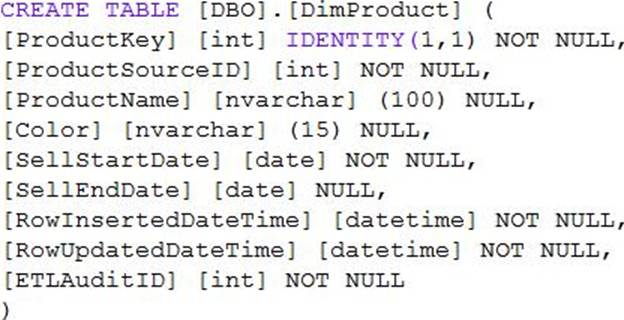You need to implement a Type 3 slowly changing dimension (SCD) for product category data in an Azure Synapse Analytics dedicated SQL pool.
You have a table that was created by using the following Transact-SQL statement.

Which two columns should you add to the table? Each correct answer presents part of the solution. NOTE: Each correct selection is worth one point.
A. [EffectiveScarcDate] [datetime] NOT NULL,
B. [CurrentProduccCacegory] [nvarchar] (100) NOT NULL,
C. [EffectiveEndDace] [dacecime] NULL,
D. [ProductCategory] [nvarchar] (100) NOT NULL,
E. [OriginalProduccCacegory] [nvarchar] (100) NOT NULL,
Explanation:
A Type 3 SCD supports storing two versions of a dimension member as separate columns. The table includes a column for the current value of a member plus either the original or previous value of the member. So Type 3 uses additional columns to track one key instance of history, rather than storing additional rows to track each change like in a Type 2 SCD.
This type of tracking may be used for one or two columns in a dimension table. It is not common to use it for many members of the same table. It is often used in combination with Type 1 or Type 2 members.

Reference: https://k21academy.com/microsoft-azure/azure-data-engineer-dp203-q-a-day-2-live-session-review/